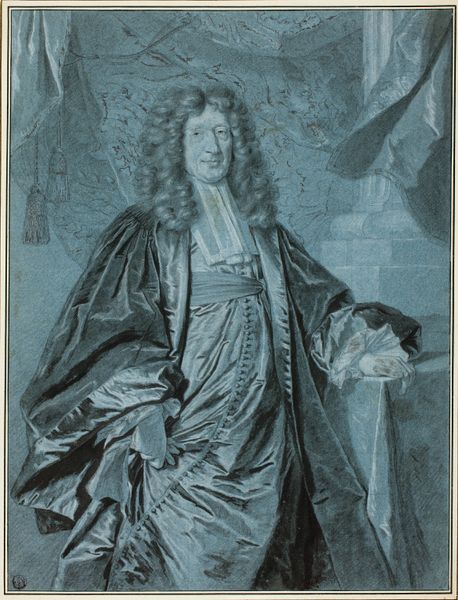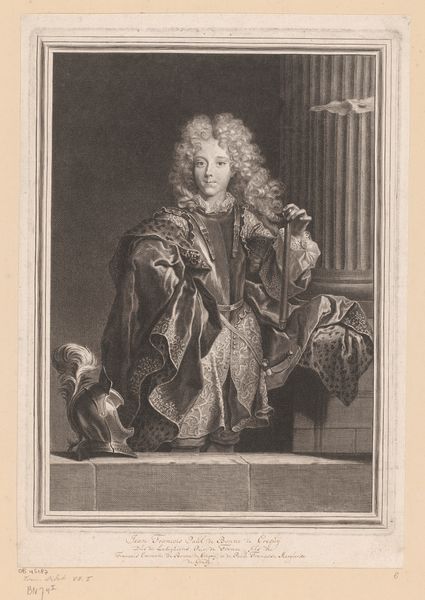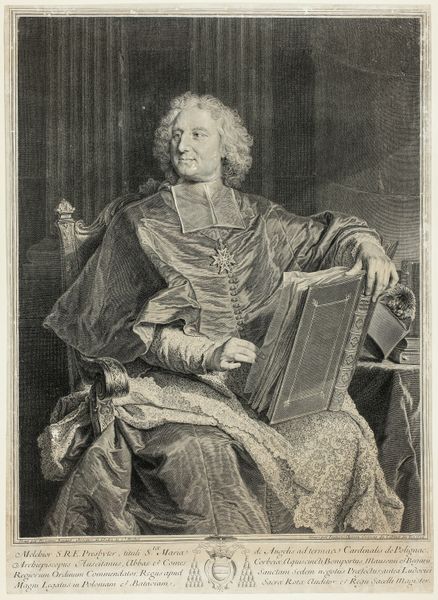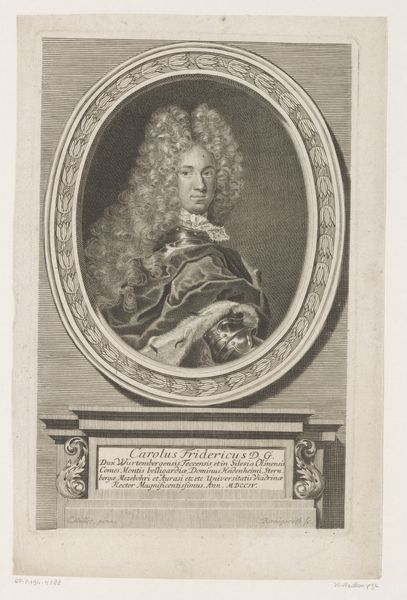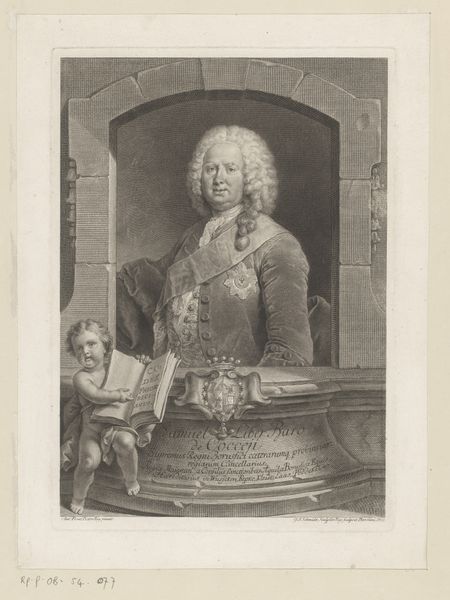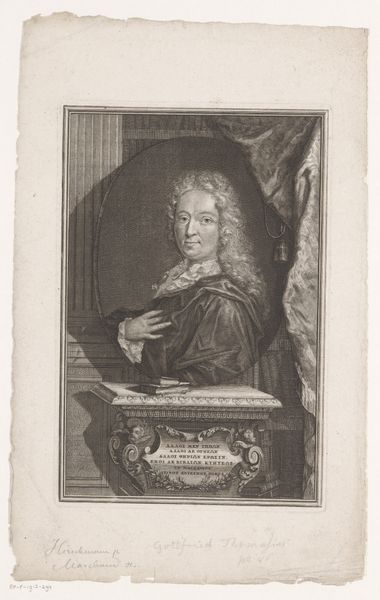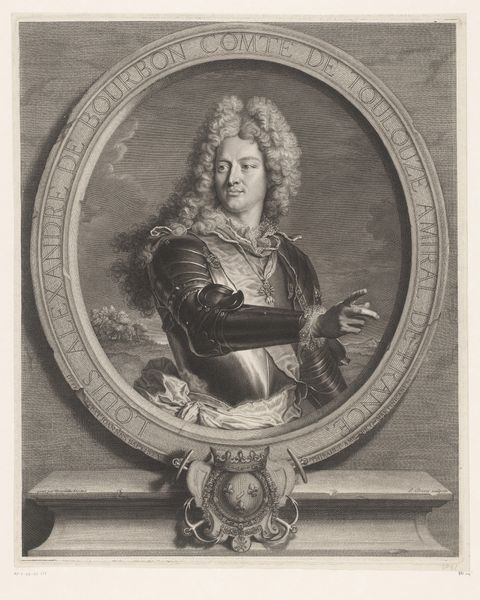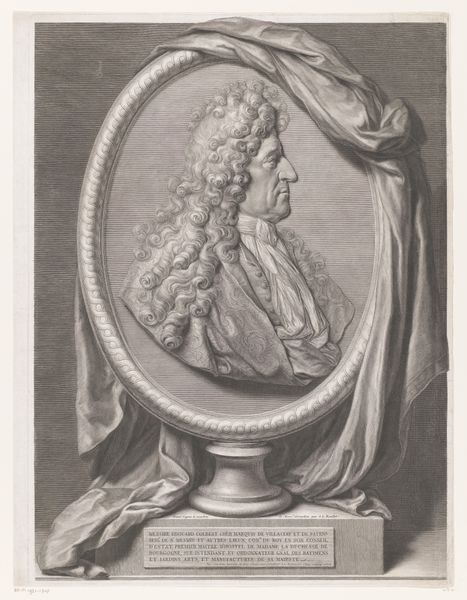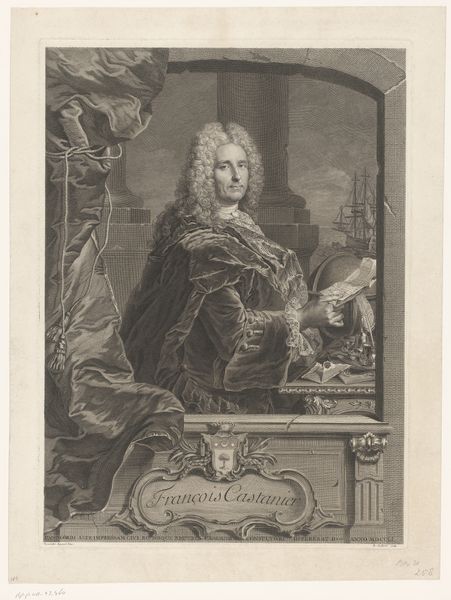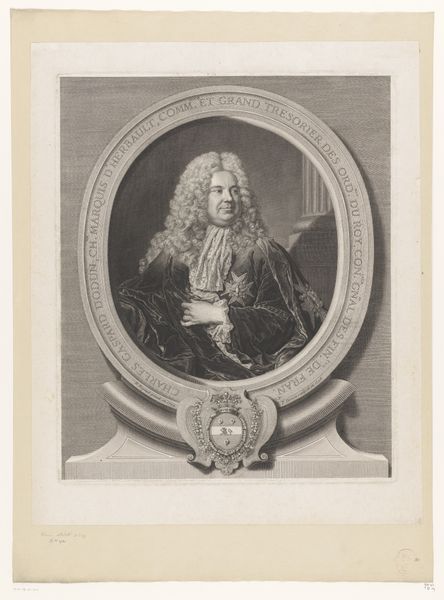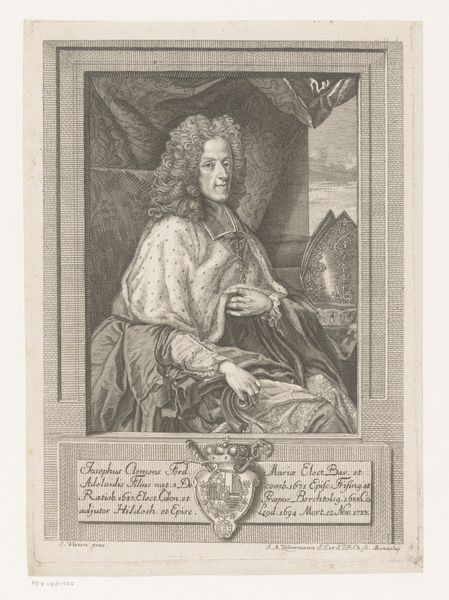
Kniestück eines Mannes mit Allongeperücke, am Schreibtisch stehend eine Mappe haltend
0:00
0:00
drawing, paper, chalk, charcoal
#
portrait
#
drawing
#
baroque
#
paper
#
oil painting
#
chalk
#
charcoal
Copyright: Public Domain
Curator: Here we have an intriguing drawing from the Städel Museum’s collection. It’s titled "Kniestück eines Mannes mit Allongeperücke, am Schreibtisch stehend eine Mappe haltend," which translates to "Half-length portrait of a man with an Allonge wig, standing at a desk holding a folder.” The artist is Robert Levrac-Tournières. Editor: My immediate reaction is one of formality and restraint. The tones are muted, dominated by greys, and while the sitter's pose appears somewhat relaxed, his immense wig suggests quite a strict adherence to social conventions. Curator: Exactly. The wig is the key signifier, isn’t it? It immediately places this individual within a specific echelon of society, a man of status and likely considerable wealth during the Baroque period. His profession is hinted at by the desk and document, yet there’s a slight ambiguity; is he a lawyer, a scholar, or perhaps a government official? The drawing encourages us to consider his position within the socio-political structures of the era. Editor: And looking closer, I'm fascinated by the materials. It appears to be chalk and charcoal on paper. The combination allows for subtle gradations of light and shadow, especially in the rendering of the drapery. The almost photorealistic level of detail gives the image an incredible tactile feeling; you want to reach out and touch that robe. It is like he made that chalk almost perform theatrically on the surface. Curator: I agree. Tournières skillfully used these materials to convey not just likeness, but also texture and volume. It would have taken an artist with very fine-honed technical abilities to realize this portrait, playing into the tradition and established structures of the Baroque portrait. Editor: It is hard to avoid reading the artist’s engagement in consumption culture here; look at the man's finery. What must the social economy of wig-making have been like, the production and acquisition of paper, charcoal and chalk too! The material choices speak volumes, no pun intended. Curator: True, the drawing becomes an artifact reflecting not just individual status but broader societal values. Editor: It really makes you think about who had the means to commission or produce this type of work. The artist also shows he can perform well for these elite groups. Curator: Absolutely. It encapsulates a world of social and economic hierarchies, captured in the lines of a skilled hand. Editor: Seeing it this way, as a tangible artifact reflecting a very specific moment and culture really deepens my understanding of both the artwork itself and the society that produced it.
Comments
No comments
Be the first to comment and join the conversation on the ultimate creative platform.
